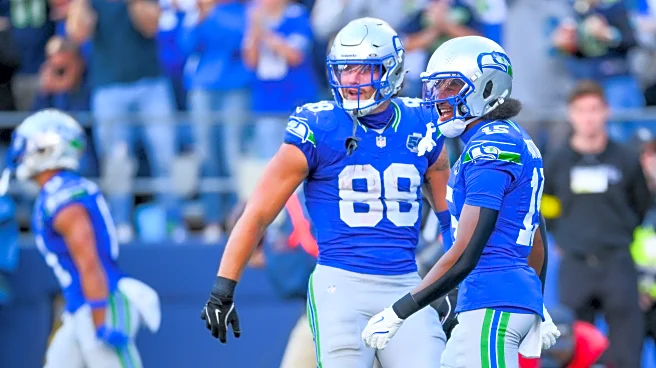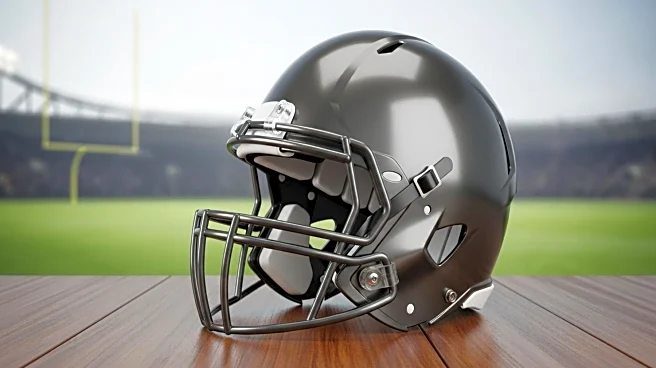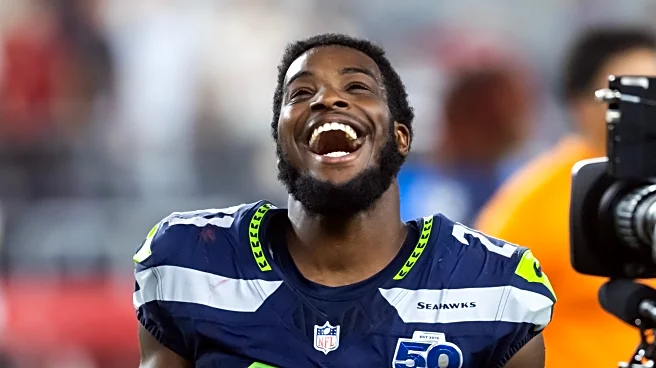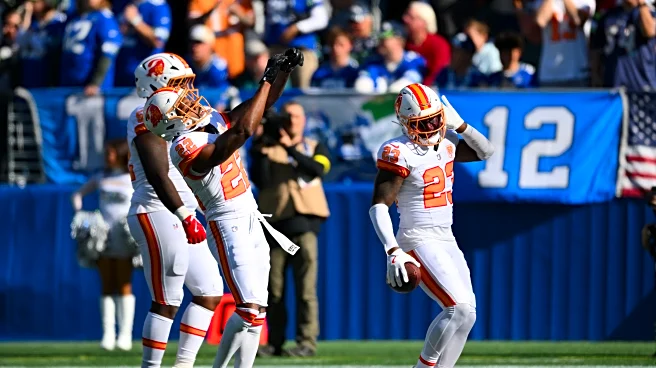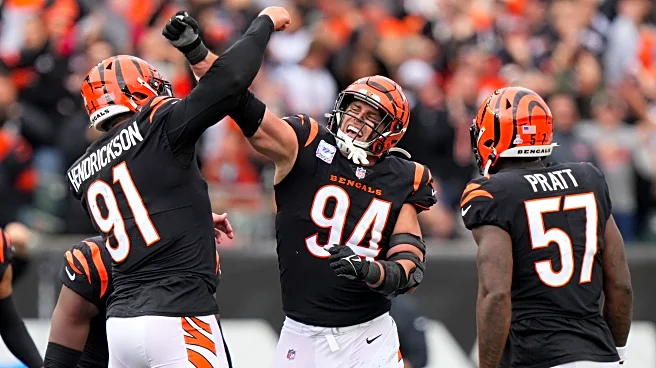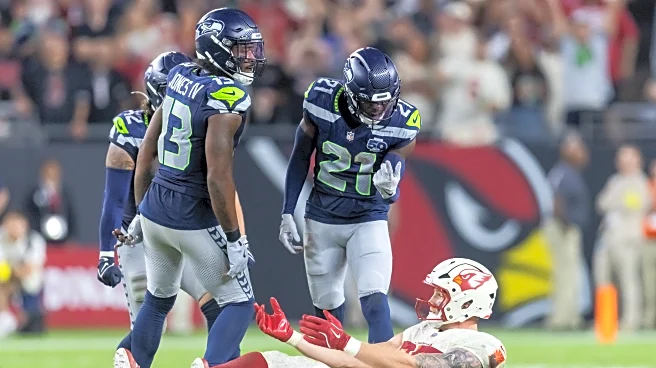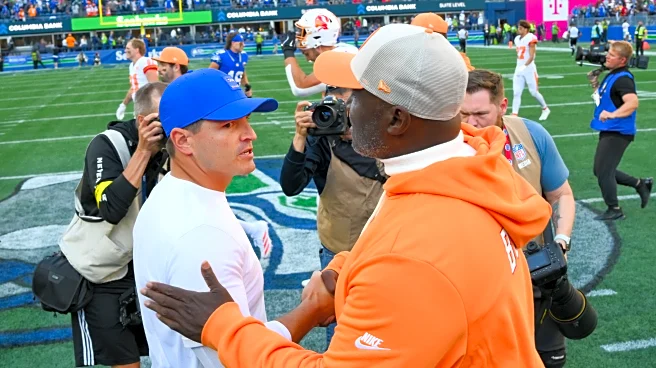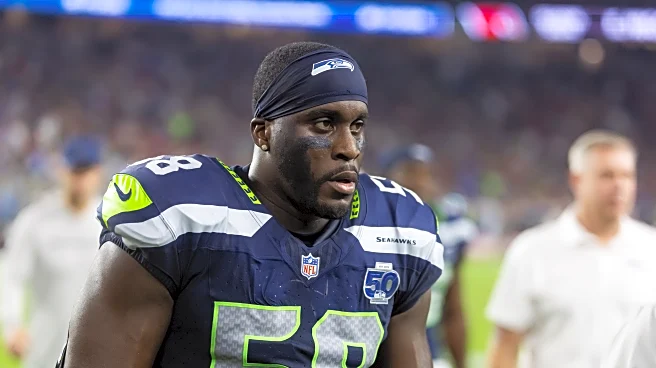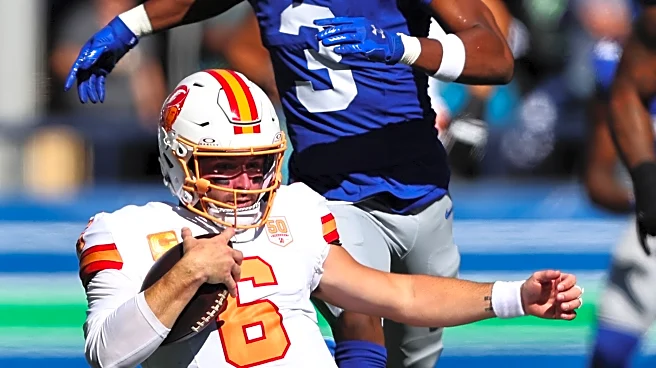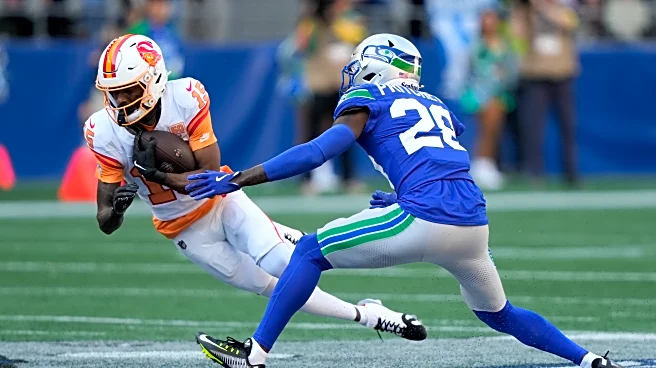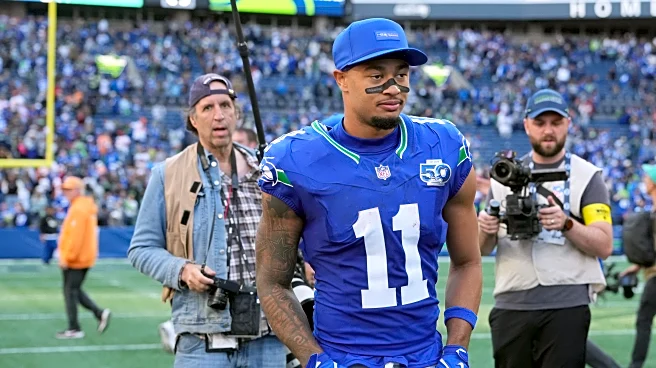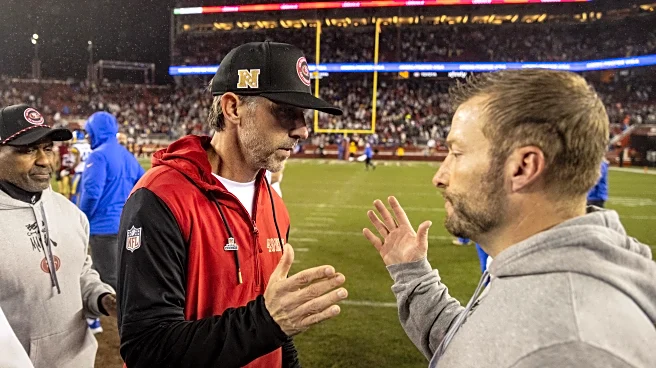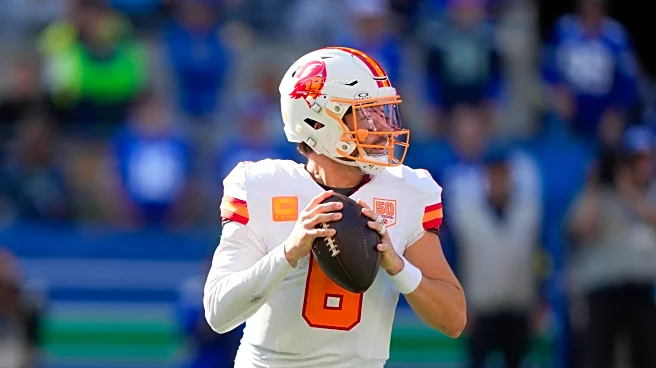A win against the Tampa Bay Buccaneers could have been very important for the Seattle Seahawks’ postseason projections. Unfortunately, it seemed to slip through their fingers, with the team losing on a field goal with 00:00 on the clock, after one of the most worrying defensive performances under Mike Macdonald.
All data used in this article was taken from PFF. Let’s review the film!
The Bad
There is a problem in the pass rush
If you’re a regular reader, you know how many times I’ve raised concerns about the team failing to convert pressures
into sacks and, especially, not being effective in applying pressure on the edges. This issue was somewhat obscured once the defensive tackle’s work was yielding results. The injuries to Derick Hall and DeMarcus Lawrence brought this issue to light.
The Seahawks faced offensive linemen who yielded a lot of pressure when they played the Pittsburgh Steelers, New Orleans Saints, and Bucs. The team should have explored the side more with Broderick Jones, Taliese Fuaga, and Charlie Heck. Heck had yielded eight pressures in two games. The Seahawks forced five pressures on him, but only hurries and a sack on a blitz.
A total of 12 pressures and one sack was the pass rush production against the Bucs, who played without their right guard and right tackle. No hits on the QB; the pressure was inconsistent. This gave Baker Mayfield time in the pocket to attack a secondary full of backup players of questionable quality. Furthermore, it further exposed the Seahawks’ inability to keep the QB in the pocket, as warned in our preview article for this game.
On this play, Boye Mafe, still searching for his first sack of the year, uses a euro-step, escapes the right tackle, but seemingly for no reason slows down before reaching the QB, allowing Mayfield to escape and gain yards.
Here we have Byron Murphy with excellent footwork, beating the guard and putting pressure on the QB. However, once again, the Seahawks fail to keep the QB in the pocket, and Mayfield not only escapes the sack but also gains yards.
Derick Hall manages to use power move right side, but on the other side, Boye Mafe, after attempting another euro-step, is moved by Tristan Wirfs easily, leaving the edge open for Mayfield to escape and buy time.
Final touchdown for the Bucs. The Seahawks decide to send only three to pressure. Mafe has some initial success, but again gives up a lane to Mayfield, who spent too much time in the pocket navigating his progressions. When you have Josh Jobe, Ty Okada, and especially Nehemiah Pritchett in your secondary, this can be fatal.
Execution and planning problems/adjustments in defense
The Seahawks had 10 days to plan for the game and failed. Even knowing they would be missing players, the team had no alternatives to protect themselves. During the game, it became clear that the Bucs were exploiting the areas where Drake Thomas, Jobe ,and Okada were located. This changed somewhat when Pritchett entered and gave Tampa another option.
The Seahawks failed to adjust to this. They failed to slow down Emeka Egbuka and failed to find different ways to effectively pressure Baker Mayfield. These planning errors and lack of adjustments, as well as the absences, led to numerous execution errors, making things even worse for the Seahawks.
Here, the Seahawks start the snap with a Cover 1 shell. Post-snap, the changes begin. Derion Kendrick will defend one half of the field, and Coby Bryant will drop between the two deep defenders’ zones, thus forming a Tampa 2. This will require Ernest Jones to quickly reach the numbers, a difficult task for the LB. The idea was that the disguise would slow down Mayfield’s processing and give time to Jones to reach it. However, the QB quickly recognized the opportunity and easily got the first down.
The Seahawks blitzed and dropped Byron Murphy and Nwosu into hook zone coverage, aiming to eliminate the short pass option in the middle of the field. However, Mayfield was targeting the zone with Jobe and Okada in coverage. The safety took a while to get downfield, and the pass was successfully completed. The key point of the play is that Josh Jobe would have given up a TD here, being quickly beaten by Egbuka at the line of scrimmage. Luckily, Mayfield got his first read on the play.
The Seahawks call a simulated pressure that is a defensive tactic that creates the illusion of a heavy blitz while actually rushing only four players. Macdonald is a master at this, but he has been decreasing the use of this and stacked boxes, which, in my view, is a mistake. Returning to the play, the team essentially puts eight in the box, sending Nick Emmanwori in the QB hunt and dropping Uchenna Nwosu. The point is that Nwosu’s drop defends the same zone as Drake Thomas; one of them missed, and this gave the pass a chance to connect.
I’ve watched this play many times, seen and read many analysts talking about it, and still, I’m not entirely convinced by the call here. What I think happened is that it was a Quarters with Jobe defending the deep field (1/4)(which I don’t think is a good idea; he’ll always need the help of a safety) and being easily burned by Egbuka’s route. The one who could have helped would have been Okada, but the safety was in Poach coverage.
Poach is a defensive strategy where the weak-side safety reads the number 3 receiver and gets involved in coverage, either by taking the receiver’s vertical route or taking the post route if the number 3 receiver doesn’t go vertical. That’s exactly what happens here, with the big catch being given up.
The Good
Signs of improvement on the Offensive Line
The Seahawks’ offensive line has been featured heavily in the “Bad” section of this article, but against the Bucs, I saw some improvement. Pass protection was still quite inconsistent, with nine pressures conceded and three of the five starters receiving a PFF grade below 50 in Pass Block.
We still had some pretty poor plays like the one above, where Anthony Bradford loses easily and seems to use his foot to trip the defender in a bizarre move.
But there were improvements, mainly with the offensive line working as a unit, rather than “every man for himself.” The Bucs called two stunts on their defensive line, and the Seahawks blocked masterfully. On the left side, Gray Zabel passes the defender to Charles Cross and moves very well to catch the looper, making excellent contact. On the other side, Braford is aggressive against Vita Vea, which helps Abe Lucas, but could open up space for the looper (#5). However, center Jalen Sundell diagnoses the play and is already waiting to help the right tackle.
The main improvement was in the running game. Until then, it seemed like 80% of the Seahawks’ rushing production came from miracles and big plays made by Ken Walker. In this game, the starting lineup took significant strides, executing better and imposing themselves more physically. As a result, Walker didn’t have any runs for lost yards.
A sign of the physical imposition. The Seahawks call it the Duo run here, which consists of using double blocks to open up space, and the RB has to read MIKE and “run away” from him. The team had tried this type of run without much success because the double blocks didn’t create gaps and made it easier for the linebackers to get to the RB in the backfield. The Seahawks create two gaps in the play above. Lavonte David (#54) attacks one of them, but this time Zach Charbonnet has another option and manages to advance with the run.
Nothing too fancy here, nor a huge improvement. However, Sundell manages a good block to open the gap, along with Bradford, who shows off his strength by blocking the DL with just one hand.
The team rightly used Walker more in the outside zone and reaped the rewards. Excellent blocking by Abe Lucas, who is recovering from a poor game against the Cards, will be crucial for the development of the rest of the OL, especially Bradford. Furthermore, AJ Barner and especially Cooper Kupp provide key blocks to secure more yards for the RB.
Once again, good teamwork in this Duo run. The gap is opened for the RB’s advance with blocks from Eric Saubert and Cooper Kupp, demonstrating why he is one of the best WRs blocking for the run game.
Sam Darnold kept the Seahawks alive in the game
Darnold’s interception late in the game cost us the victory. However, the Seahawks only reached that point with a chance of winning thanks to the five TD drives he led.
Darnold numbers were 28 of 34, 341 yards, 4 TDs, and the interception. Speaking about the play after the game, Darnold took responsibility, saying he should have called a different protection and that he tried to throw the ball away. This last point is the only thing that I’m concerned about.
Yes, he was under pressure, but the decision to throw the ball away like he did is highly questionable because it could have resulted in a deflection in both the Seahawks’ OL or the Bucs’ DL, as it did. Darnold tried to throw the ball away this way on other plays and continues to be risky.
I believe Darnold thought Lavonte David (#54) would come on the blitz, which is why the protection call was zone to the right side and man to the left side (despite Zabel’s signal before the play pointing to #8). The blitz actually comes from the other side, and the OL executes its assignment correctly. The blitzer is left to the RB who blocks well, but there’s also a DB on the blitz (something the Bucs often do is send a CB on the blitz in condensed formations on the opposing offense), and it’s the QB’s responsibility to recognize this. Under pressure, Darnold tries to throw the ball away, but hits the DL’s helmet, resulting in the interception.
Of the four incomplete passes thrown by Darnold, this is the most concerning. The QB was very lucky on this play. Horton makes the quick cut, and it should have been a TD if the ball went closer to the pylon. Darnold’s pass is poor and gives the CB a chance to not only deflect the pass, but also turn it into a 99-yard pick-six. The Seahawks scored the TD on the next play, but the game could have been different if it had been 20-0 instead of 13-7.
One trend I’ve noticed with Darnold is that he’s been very conservative on most of his passes. On this play, he looks to Horton, who would have been free as the play progressed. I believe Darnold has made other, more difficult passes than this one, but the QB prefers to go to the next read, and AJ Barner, who had a great game, gets the first down.
Play action, there’s a bit of confusion in Barner and Kupp’s routes, and Darnold throws a nice pass even without a good base, moving to the left, flipping his hips and, under pressure, he completes a good pass for JSN. He’s been doing very well in these situations, throwing against the body’s movement.
Another example of his good arm. It’s worth noting that the play starts with Kupp on the left and JSN in the backfield. Kubiak does a good job keeping the defense guessing until very close to the snap. JSN wins the slant, and Barner and Kupp’s routes open up space for the pass, which lands in the middle of four defenders. Great TD!
4th & 2, the Seahawks call play-action, and Kupp appears to be the QB’s first target, but he’s well covered. Barner was essentially on the first down line, and I think he would have been Darnold’s option, but the pressure came with Charbonnet’s blocking error. Darnold stood firm in the pocket, keeping his eyes downfield. The Bucs defense stopped on the play, waiting for the sack, leaving Horton free to score his third receiving TD of the season.
Once again, the Seahawks called a Rub Route in the red zone. This was an excellent way to attack the Bucs’ man coverage, which was frequently used in this area of the field. A Rub concept or pick play is a play in which a receiver intentionally runs a route that creates contact or is intended to delay the defender guarding another receiver, hindering the defender’s ability to cover the designated player and leaving the second receiver open. Kupp is fantastic in this play. Note that he stops just as the defenders cross, creating more separation for Barner, who has excellent control to stay in the field, break the tackle, and score the TD, which could have been the game-winning TD.
Finally, I’d like to commend Kupp’s work. We’ve struggled so often against him on third downs when he was with the Rams. It seems we’re now using that to our advantage. Kupp appears to be Darnold’s first read. The WR beats rookie Jacob Parrish’s good coverage at the line of scrimmage. However, he stumbles and loses his balance. Darnold stands firm, waiting for him to recover, and throws the ball away from the defender, where Kupp has to stretch his arms and get the first down. Darnold’s stellar performance was that he remained calm in the pocket and had the patience to connect with the WR.
Final Thoughts
The most important thing from this game is that lessons were learned. Macdonald’s defense needs to perform better, and the quarterback needs to be able to make adjustments during the game. The injuries exposed the lack of depth in many areas of the defense. This was something overlooked by John Schneider, who will need to work his magic to adjust the roster with the season underway and no surplus draft capital to do so (the Seahawks will not have compensatory picks in the upcoming draft).
Much of what was done worked, but there is still room for improvement. The NFC playoff spots will be highly contested, and any detail could determine whether the team misses the postseason. The time to fix things is now.
Go Hawks!
